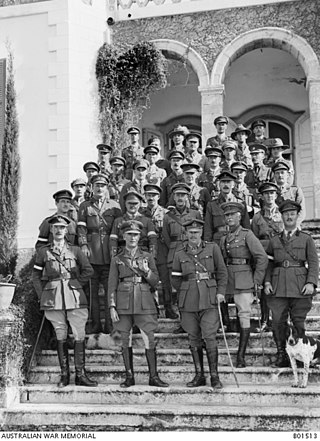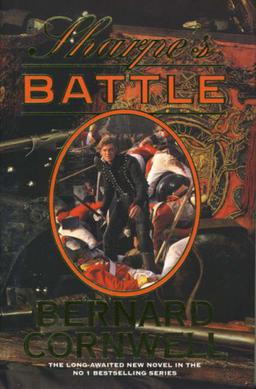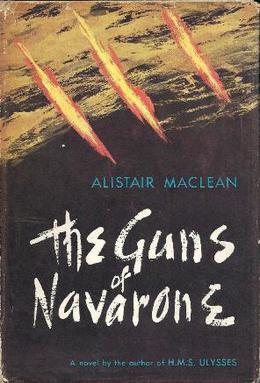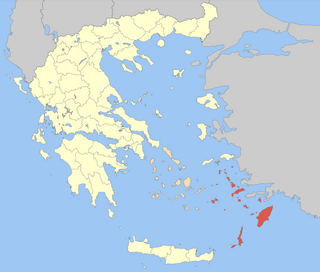
Anatolia, also known as Asia Minor, is a large peninsula or a region in Turkey, constituting most of its contemporary territory. Geographically, the Anatolian region is bounded by the Mediterranean Sea to the south, the Aegean Sea to the west, the Turkish Straits to the north-west, and the Black Sea to the north. The eastern and southeastern boundary is either the southeastern and eastern borders of Turkey, or an imprecise line from the Black Sea to Gulf of Iskenderun. Topographically, the Sea of Marmara connects the Black Sea with the Aegean Sea through the Bosporus strait and the Dardanelles strait, and separates Anatolia from Thrace in the Balkan peninsula of Southeastern Europe.

The First Balkan War lasted from October 1912 to May 1913 and involved actions of the Balkan League against the Ottoman Empire. The Balkan states' combined armies overcame the initially numerically inferior and strategically disadvantaged Ottoman armies, achieving rapid success.

The Australian and New Zealand Mounted Division was a mounted infantry division of the British Empire during the First World War. The division was raised in March 1916 and was assigned to the I ANZAC Corps. On establishment, it consisted of four brigades comprising three Australian Light Horse and one New Zealand mounted rifles, supported by British horse artillery. In 1917, one of the Australian brigades was replaced by a British yeomanry brigade. After April 1917, the standard order of battle was reduced to two Australian brigades and one New Zealand brigade, although the Imperial Camel Corps Brigade and other British mounted brigades were temporarily attached several times during operations.

The Desert Mounted Corps was an army corps of the British Army during the First World War, of three mounted divisions renamed in August 1917 by General Edmund Allenby, from Desert Column. These divisions which served in the Sinai and Palestine Campaign had been formed by Australian light horse, British yeomanry, and New Zealand mounted rifles brigades, supported by horse artillery, infantry and support troops. They were later joined by Indian cavalry and a small French cavalry detachment.

The Greco-Turkish War of 1919–1922 was fought between Greece and the Turkish National Movement during the partitioning of the Ottoman Empire in the aftermath of World War I, between 15 May 1919 and 14 October 1922.

The Battle of the Sakarya, also known as the Battle of the Sangarios, was an important engagement in the Greco-Turkish War (1919–1922).

The Battle of Sarikamish was an engagement between the Russian and Ottoman empires during World War I. It took place from December 22, 1914, to January 17, 1915, as part of the Caucasus campaign.

The Ten Thousand were a force of mercenary units, mainly Greeks, employed by Cyrus the Younger to attempt to wrest the throne of the Persian Empire from his brother, Artaxerxes II. Their march to the Battle of Cunaxa and back to Greece was recorded by Xenophon, one of their leaders, in his work Anabasis.

The 7th Armoured Brigade was an armoured brigade formation of the British Army. The brigade is also known as the "Desert Rats", a nickname formerly held by the 7th Armoured Division, of which the brigade formed a part during the Second World War until late 1941.

Sharpe's Battle is the twelfth historical novel in the Richard Sharpe series by Bernard Cornwell, first published in 1995. The story is set during the Peninsular War in Spain in 1811.

The burning of Smyrna destroyed much of the port city of Smyrna in September 1922. Eyewitness reports state that the fire began on 13 September 1922 and lasted until it was largely extinguished on 22 September. It began four days after the Turkish military captured the city on 9 September, effectively ending the Greco-Turkish War, more than three years after the Greek landing of troops at Smyrna. Estimated Greek and Armenian deaths resulting from the fire range from 10,000 to 125,000.

The Byzantine Empire experienced cycles of growth and decay over the course of nearly a thousand years, including major losses during the early Muslim conquests of the 7th century.

Lieutenant General Sir Stanley George Savige, was an Australian Army soldier and officer who served in the First World War and Second World War.

The Guns of Navarone is a 1957 novel about the Second World War by Scottish writer Alistair MacLean that was made into the film The Guns of Navarone in 1961. The story concerns the efforts of an Allied commando team to destroy a seemingly impregnable German fortress that threatens Allied naval ships in the Aegean Sea and prevents over 1,200 isolated British Army soldiers from being rescued.

The Dodecanese campaign of World War II was an attempt by Allied forces to capture the Italian Dodecanese islands in the Aegean Sea following the Armistice with Italy in September 1943, and use them as bases against the German-controlled Balkans. Operating without air cover, the Allied effort was a costly failure, the whole of the Dodecanese falling to the Germans within two months. The Dodecanese campaign, lasting from 8 September to 22 November 1943, resulted in one of the last major German victories in the war.

Vincigliata Castle is a medieval castle which stands on a rocky hill to the east of Fiesole in the Italian region of Tuscany. In the mid-nineteenth century the building, which had fallen into a ruinous state, was acquired by the Englishman John Temple-Leader and entirely reconstructed in the feudal style.

The 15th Cavalry Brigade was a brigade-sized formation that served alongside British Empire forces in the Sinai and Palestine campaign, during World War I. Originally called the Imperial Service Cavalry Brigade it was formed from Imperial Service Troops provided by the Indian princely states of Jodhpur, Hyderabad, Mysore, and Patiala which each provided a regiment of lancers. A maximum of three regiments served in the brigade at any one time. The states of Kashmir, Idar and Kathiawar provided smaller detachments for the brigade, which was at times reinforced by other British Empire regiments and artillery batteries when on operations.

The Battle of Samakh was fought on 25 September 1918, during the Battle of Sharon which together with the Battle of Nablus formed the set piece Battle of Megiddo fought from 19 to 25 September 1918, in the last months of the Sinai and Palestine Campaign of the First World War. During the cavalry phase of the Battle of Sharon the Desert Mounted Corps commanded by the Australian Lieutenant General Harry Chauvel, captured the Esdraelon Plain 40–50 miles (64–80 km) behind the front line in the Judean Hills on 20 September, when the 3rd Light Horse Brigade captured Jenin. The 4th Light Horse Brigade, Australian Mounted Division was deployed guarding supply columns, and prisoners, before being ordered to attack and capture Samakh on the shore of the Sea of Gallilee. Here the Ottoman and German garrison had been ordered by the commander of the Yildirim Army Group to fight to the last man.
Brigadier-General Francis Stewart Montague-Bates,, (1876–1954) was a British Army officer in the early part of the 20th century, seeing active service in the Second Boer War, the First World War, the Occupation of Constantinople, the Anglo-Irish War, and the Second World War.

After the fall of Greece to the Axis powers in April–May 1941, elements of the Greek Armed Forces managed to escape to the British-controlled Middle East. There they were placed under the Greek government in exile, and continued the fight alongside the Allies until the liberation of Greece in October 1944. These are known in Greek history as the Greek Armed Forces in the Middle East.



















